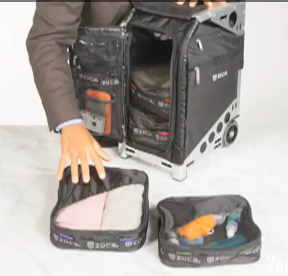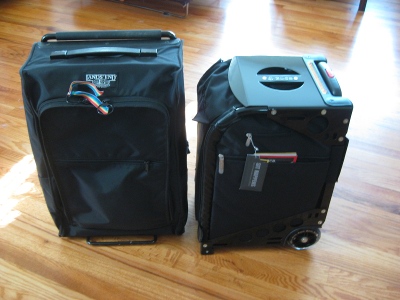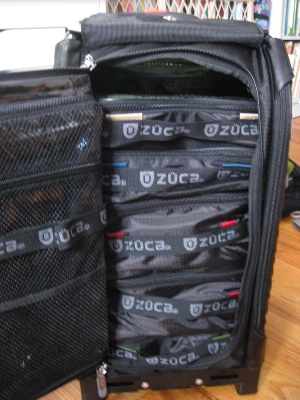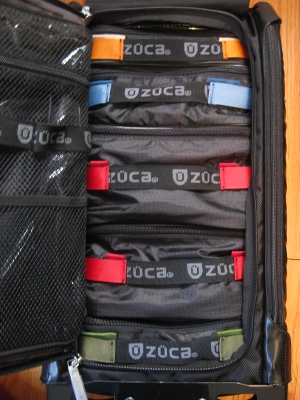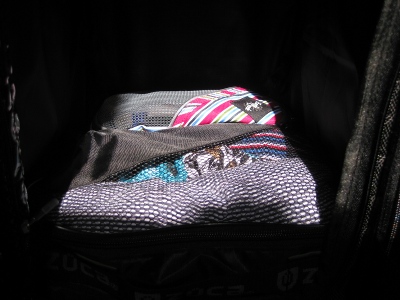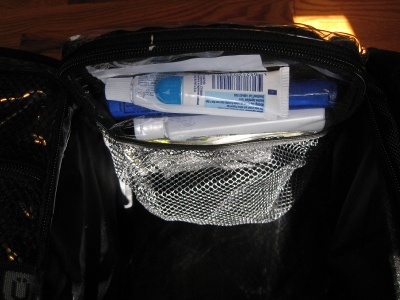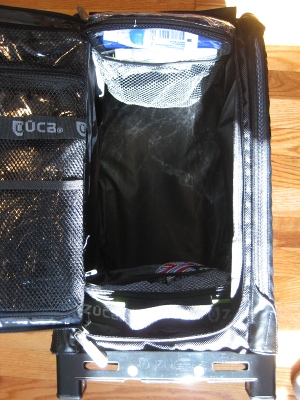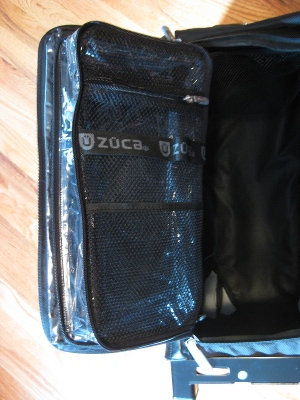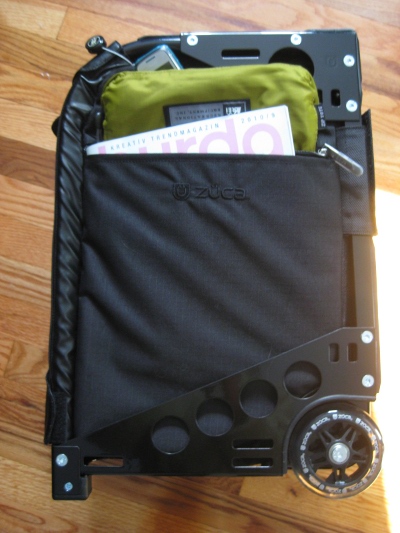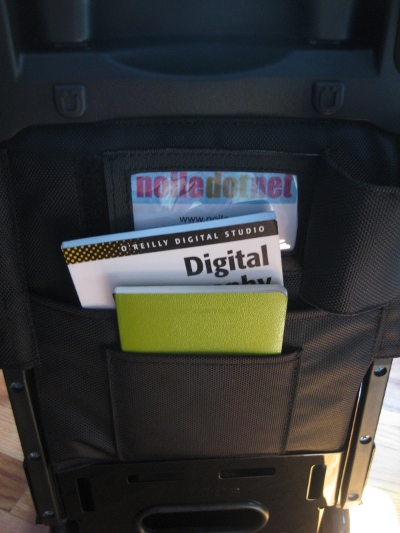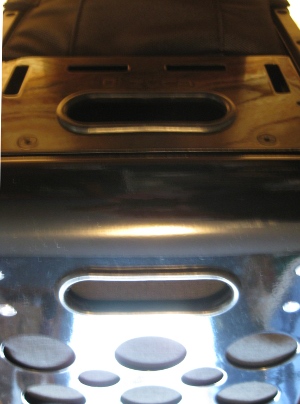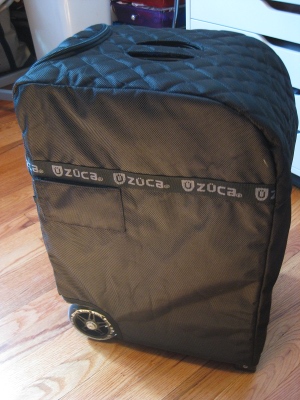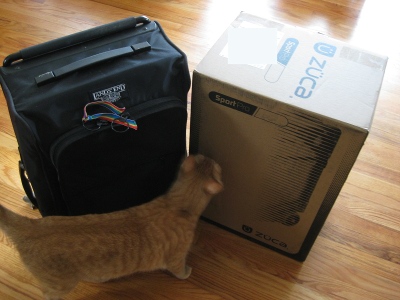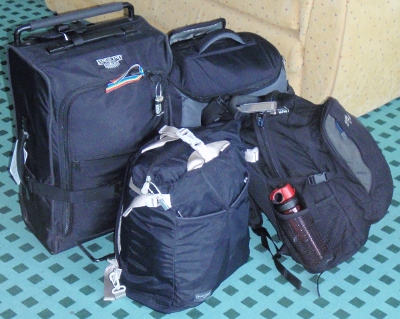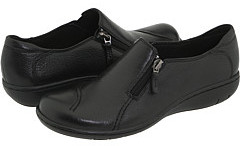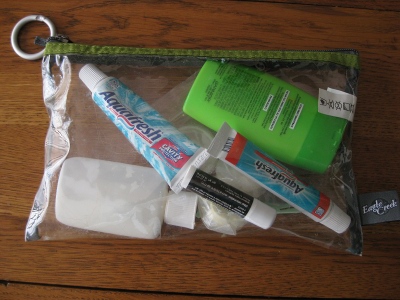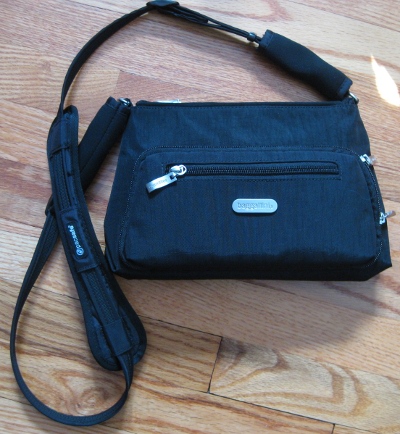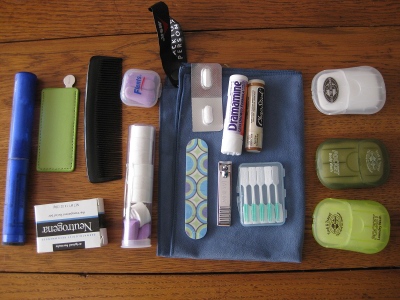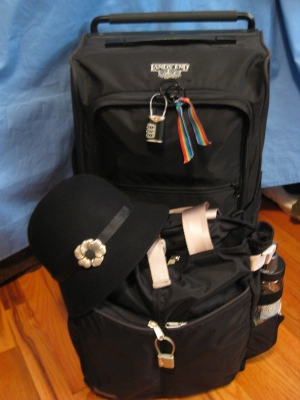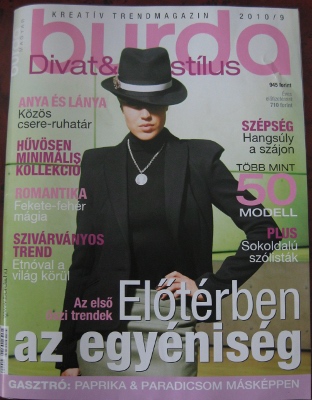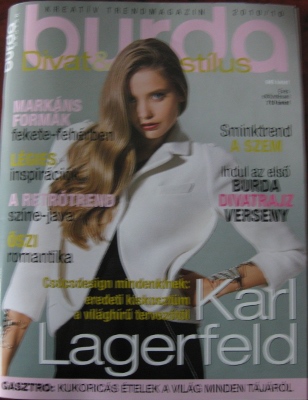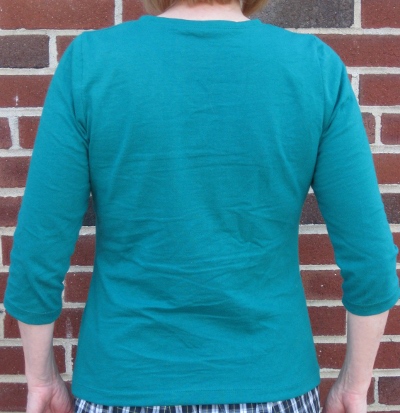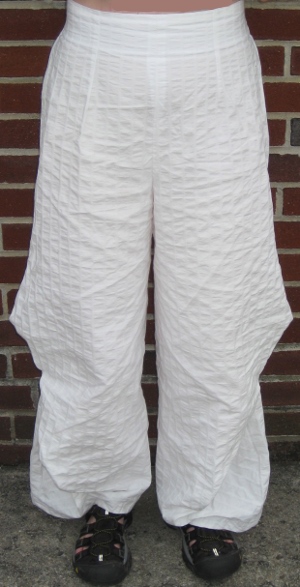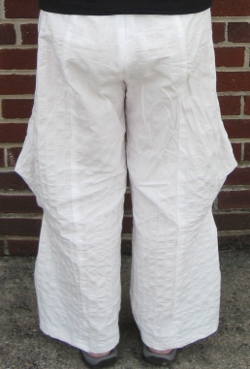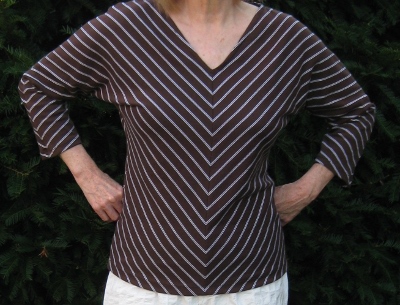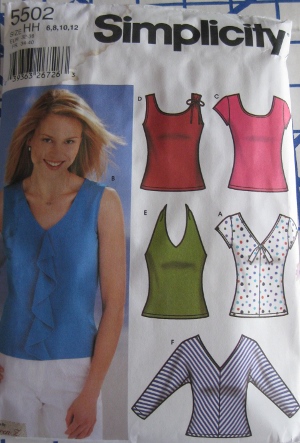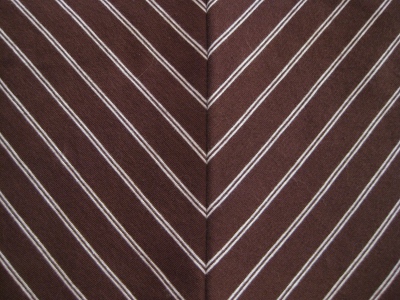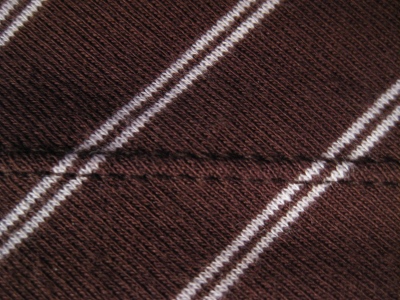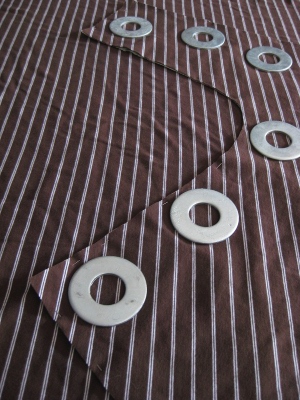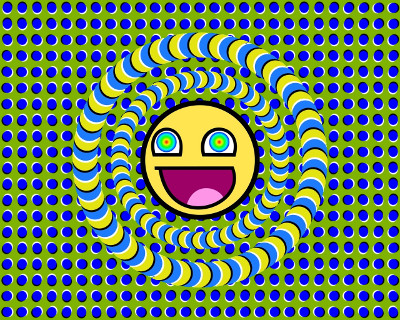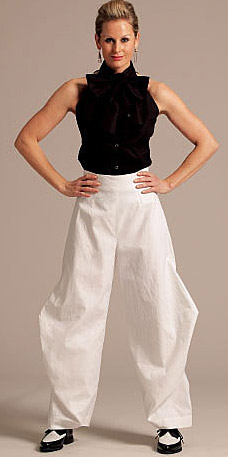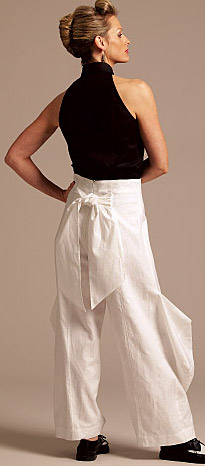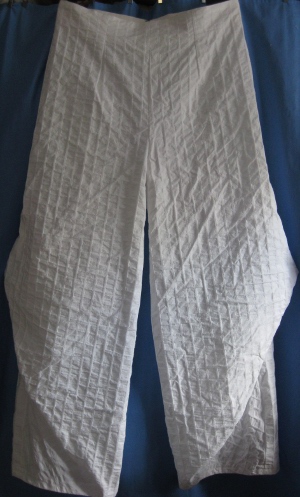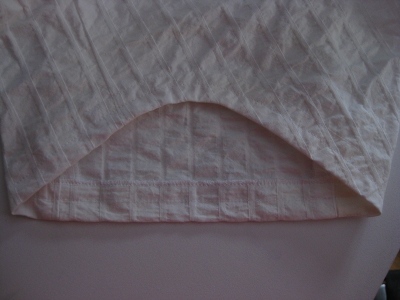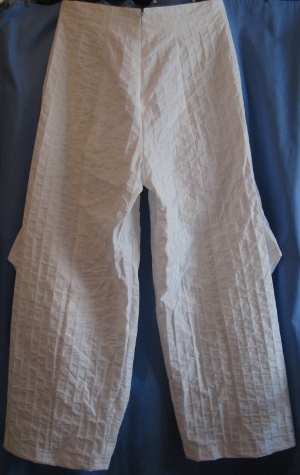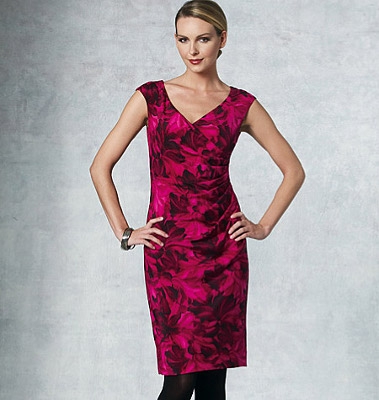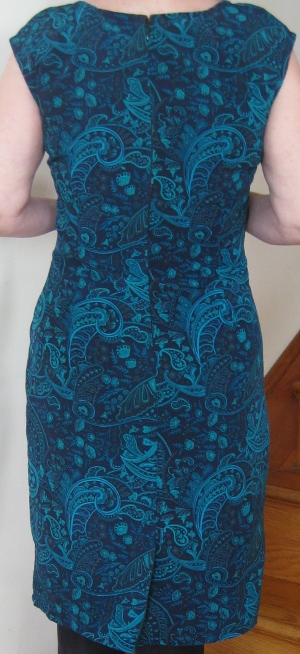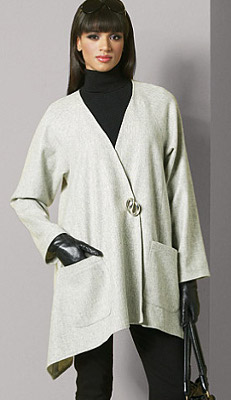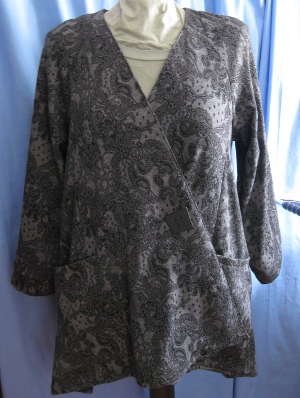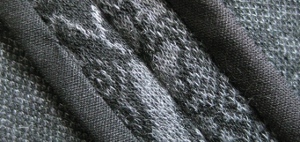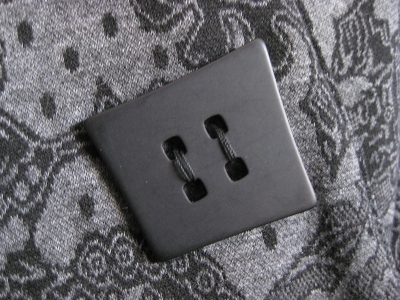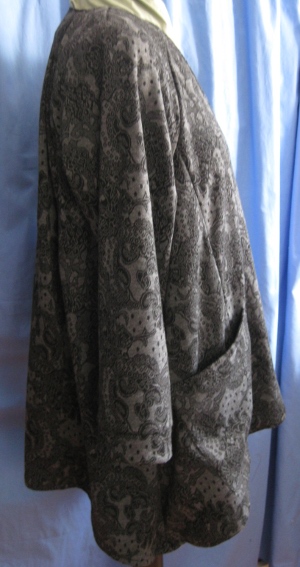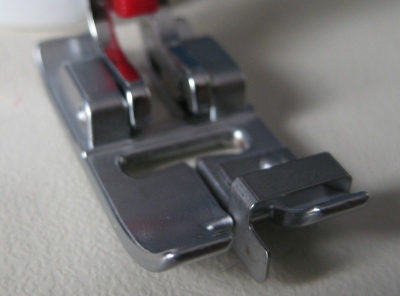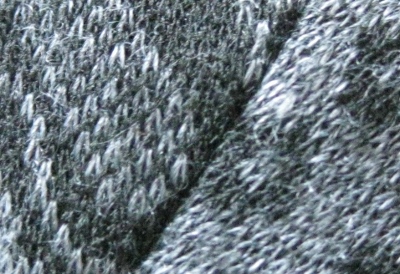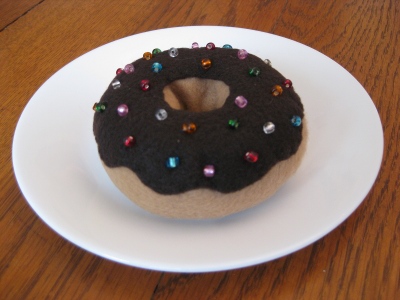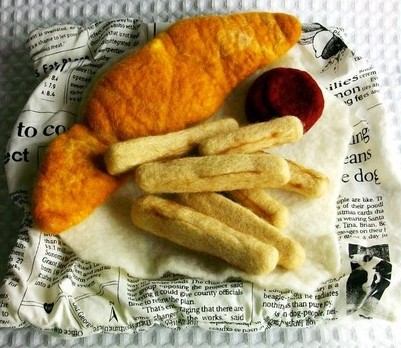Dear sewers, hot on the trail of my last post (which was mostly written BEFORE my last two trips!), I am trying your patience with yet another luggage/travel post. Bear with me; shortly we will return to our regularly scheduled programming.
I knew the day was coming, but hadn’t expected it quite this soon. As I lifted my long-time carry-on out of the overhead bin for the last time as we returned from Hungary, I noticed that the supporting plate under the bag had broken loose. I shoved the support back into place, but knew that this meant that it was vehicles-only for this bag from now on.
Since I’d done my research, though, I knew what the replacement would be, and I ordered a ZÜCA bag immediately. Here’s a shot of the type of bag I got, taken from ZÜCA’s glitzy, but not-very-enlightening, video:
ZÜCA makes quirky cases for travelers, for make-up artists and for ice-and roller-skaters. Each type is different; most have fitted interior pockets of one sort or another. (And good luck finding what you want on ZÜCA’s website: See “Note Regarding Ordering” below.) My ZÜCA is a Sport Pro; more on what that means, or doesn’t, further into the post.
I chose this ZÜCA for these reasons:
- It fits standard carry-on dimensions, and will fit in the overhead bin of virtually any plane that has them (the dimensions are actually slightly smaller than those of the overhead carry-on bag I’ve used for nearly 20 years, and never had to check.)
- Every review I read said that the ZÜCA rolls like a dream, and the large skateboard wheels are replaceable.
- The design and construction look excellent. It’s held together by screws, which I can tighten if necessary. The actual bag, which fits inside a metal frame, can be replaced if damaged or torn, without requiring a frame replacement. A cover comes with it, so that the bag is protected when tossing it around, or if you must check it for some reason.
- The frame is designed to support up to 300 lbs. It’s a place to sit in those interminable lines which are an inevitable part of travel these days. Find an outlet, and you’ve got somewhere to use your netbook, even if there are no other seats in sight. And get this: the seat front is curved; there are no sharp edges to cut into thighs. Someone did serious end-user testing here! (Uh, it’s a pun. Accidental, I assure you.)
The ZÜCA is oriented a little differently than most suitcases, which is, well, a bit disorienting, at least at first. It opens like a locker, with a door in the front — a “front” which would be a “side” on most suitcases. Here it is next to my well-loved old carry-on:
The suitcase on the left opens conventionally (for a roller) with a zip all around the front. The ZÜCA is sideways in the photo; the opening is facing my old carry-on. Both bags have pull-out handles for pulling or pushing, and both have handles on top for lifting; the ZÜCA’s is inside the circle indentation on top.
The cubic dimensions are almost the same, though differently arranged, and the ZÜCA, at 8.75 pounds empty, is just slightly heavier than my former carry-on. Wheels cost weight, but, for me, the trade-off is well worth it. (For the record, the ZÜCA measures 19″ x 13″ x 10″; my former bag 22″ by 14″ by 8″.)
The ZÜCA is very slightly smaller than my old bag, but holds just about as much. There’s an exhaustive list of what I travel with on this post if you’re wondering what I manage to get into such small bags. (No need to click through right now; it’s the post following this one.)
If you’ve read that previous post, you know that I’m a fan of packing cubes. If you’ve never done roll-and-cube packing before, I recommend it highly; a read though that post will tell you why. The ZÜCA Sport Pro comes with its own set, which stack in the main compartment. The effect is a lot more like dresser drawers than like randomly stuffed cubes:
To use the ZÜCA for more than a weekend’s worth of clothes, you’ll need to roll everything to fit into the cubes. And you’ll have to get used to squishing the well-stuffed cubes into the ZÜCA; the opening of the suitcase is a bit narrower than the cubes themselves.
I thought that was weird at first, and it was a little difficult to get used to, but I soon appreciated the logic — you can pull one “drawer” out and all the others stay in place — neat trick! I love the convenience of being able to grab only the cube I need, instead of unearthing all of them just to get at one item.
ZÜCA’s cubes are intelligently made, with handles at the front so that they can be grabbed easily. They’re lined — a really nice touch which should ensure durability — and piped with a vinyl edge that tends to hold the empty cubes open, making them easier to pack than unsupported ones.
They’re also color-coded, so that you can theoretically tell the sizes apart at a glance. This is the one thing I’d criticize, though: The tags are so small and indistinct that I couldn’t easily distinguish any color but red when the cubes are in the suitcase.
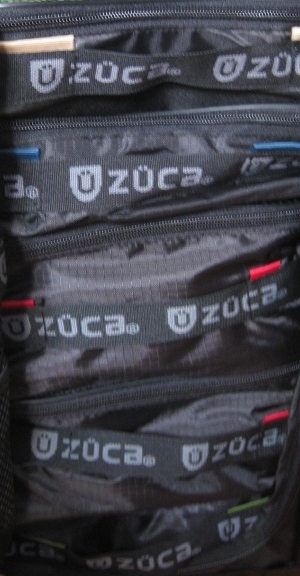
You can check this out in the photo immediately above, and in the one just previous to it — see the red tags? You can probably pick them out pretty easily, but not so much the green, blue, and the “orange” which is actually tan. (The small instruction booklet that comes with the ZÜCA explains the that green-tagged cube goes on the bottom, and the “orange” one goes on top, except that in my case, the allegedly orange cube came with tan tags.) The green and blue, particularly, practically disappear, even in the enlarged photo.
Naturally, I fixed this by adding grosgrain to the front of the cubes, at either side of the handles. At the same time I turned my tan cube back into an orange one:
Notable improvement, isn’t it? ZÜCA could similarly color-code the cubes more clearly, too, and should consider doing so. In low light even the red ZÜCA tags are difficult to distinguish.
Tip: The bottom cube in the ZÜCA Sport Pro is smaller than most of the other cubes (it’s the green one), and fits just forward of the recessed wheels. This means that there is a space behind the cube, and between the wheels. An Eagle Creek quarter cube, if not over-stuffed, fits perfectly here.
The quarter-cube is the small, multi-colored striped packet in the back. It’s my miscellaneous (clothesline, rubber stopper, needle and thread, safety pins, band-aids, etc.) kit. I love the way it fits into this otherwise useless space. (Accidentally, there’s a striped top in the cube in front. Ignore it.)
The Sport Pro has a number of other features unique to ZÜCA which make it particularly useful. There’s a mesh bag attached to the top inside of the case with a pull-out TSA compliant quart-sized plastic pouch:
The idea is that you just reach inside to toss your fluids into the TSA bin. Here’s how the TSA pocket looks with the ZÜCA open, and just the “green” pouch (and my quarter-cube) in the bottom:
It’s a great feature, with one caveat: If you fill the TSA pouch so that there’s absolutely no room to spare, grabbing the top handle of the suitcase will be difficult, as the overstuffed bag will press up against the underside of the handle, making it difficult or uncomfortable to grip. (But, let’s face it, nobody’s TSA fluids bag needs to be that full, though. Honest.)
Inside the front flap is a waterproof pocket for the soaked bathing suit you wore up until the last minute of vacation (or for that sink-laundered shirt that didn’t quite dry):
It’s normally zipped flat against the inside of the ZÜCA opening; this photo shows it unzipped and fully “popped out”. There are also two mesh pockets on the inside of the flap (essentially on top of the waterproof pocket), and several loops. (What the heck are the loops for, ZÜCA? I know they’re there for a reason, and I know you’ve thought this thing out perfectly — how about sharing with us??)
The outside of the ZÜCA is also beautifully planned, with pockets everywhere they could possibly be:
(Yeah, it’s lying on the floor. Don’t ask; it was just easier.) You’re looking at three pockets here (and there are three more, identical, on the other side). See the turquoise cell phone at the top? It’s tucked into a little tiny zip pocket that’s perfect for cell phones, small note books, snacks or whatever. See the olive green REI tote? That’s tucked into a zippered pocket that goes down the whole length of the ZÜCA, and that’s where this expandable tote lives when I travel. And the Burda? It’s in a deep open pocket that’s perfect for, you guessed it, magazines, newspapers or other flattish things to which you may want ready access.
But wait! That’s not all! Here’s the back of the ZÜCA:
The transparent pocket is for your identifying tags (I turn mine around so that no personal information is visible; this is a photo shoot, so you all are seeing my “Noile” card.) The digital photography handbook, which I should read, is in the middle pocket, and a Moleskine is in the third pocket. The front of the ZÜCA Sport Pro has no external pockets. Trust me, you don’t need any more.
See that oval below the Moleskine? It’s a handle. The ZÜCA has handles on top, back and bottom, which makes it a cream puff to lift and manipulate:
You’re looking at the back of the bag (above) and beneath it (below). The oval openings are the handles. See those cut-outs? (they look like tiddly-winks in the photo, but they’re holes in the frame). They reduce the weight of the frame, but not the strength. And they look très cool, non?
You can stuff the external pockets with confidence (though, I should add, perhaps with non-valuables) and then slip this cover over the ZÜCA before popping it into the overhead bin or checking it.
This works perfectly for me, as I never access my carry-on while in flight; everything I need on a flight is in the bag in front of my feet, not in the overhead bin.
The ZÜCA’s cover has elastic bands at one end, and attaches firmly with nylon buckles at the other end; it’s not going to slip off. Although there’s an accessory seat cushion available for the ZÜCA, you don’t really need it; the cover is quilted and very nice to sit on, but I don’t find sitting on the unadorned top of the case to be any issue, either. Like the main bag, the cover’s got its own discreet flap for ID information; that’s another thoughtful, practical touch.
The front zippers have loops so that you can use a small padlock to keep them shut, if you like, and there’s a neat flap that covers the tip of the opening. That gives the bag a sleek look, but it’s also a small security feature, since it hides the zipper pulls. I keep a padlock in one of the small side pockets, by the way, in case of need.
So what’s the bad news? Well, you might choke on the price — $285 directly from ZÜCA. If you’re not set on a particular color, you can almost certainly find it for less elsewhere, perhaps on overstock.com or ebaggs or similar sites. Or take a look around ZÜCA’s site; they’ve got a sliver-framed, pink edition on sale right now for $219, and a “factory outlet” page, which might offer fruitful hunting.
Keep in mind that you are looking for the model with two wheels, not four. The four-wheeled models are the smaller skate cases, and they’re a lot cheaper, but probably not maximally useful for serious travel involving day-to-day clothing.
In my situation, I buy the best possible luggage I can because luggage is the last thing I want on my mind when I travel. And I only buy luggage every 20 years or so; if my ZÜCA is as good as I expect it to be, I’ll never buy another suitcase. I’ll be able to maintain it by tightening screws, and the wheels and interior bag are both replaceable, should the need ever arise.
If you pay full bump and keep your ZÜCA for 20 years, it will amortize at $14.25 a year. I’d say that’s just fine. The carry-on my new Sport Pro replaced cost far less — nearly 20 years ago — but I couldn’t find a bag like it at any price, this year, that looked as if it had half the lasting power of my vintage Lands’ End bag.
Naturally, then, I asked myself if I wanted to go through three inadequate $100 bags, or buy one $300 bag that met my needs perfectly. It was a no-brainer. Get yourself a nice coupon from overstock or pay much less through other means, and you bring down the cost-per-year proportionally. Do be aware, though, that ZÜCA offers a lifetime warranty on bags purchased directly from ZÜCA or authorized dealers; you might want to make sure that you’re buying from one of those before you click. Or you might find a price that’s so good that you really don’t care one way or another . . .
Note Regarding Ordering: I ordered the ZÜCA Sport Pro, which is exactly the model I wanted. You’ll have trouble finding a “Sport Pro” on the ZÜCA website, though, if you go looking for it. The ZÜCA website is surprisingly messy and confusing, and the Sport Pro isn’t even listed as a product; to find it on their site, you must know exactly what you’re looking for. Though you’ll end up ordering something called the “ZÜCA Pro Black & Black Full Set”, you’ll get the Sport Pro, in spite of the fact that the website confusing lists only separate “Pro” models and “Sport” models. Wacky.
Here’s the box mine came in, with the “Sport Pro” labeling:
(Cats are attracted to ZÜCA. What’s not to love? Cozy, secret cubbies, all devoid of cat hair. Duty calls!)
In general, ZÜCA’s website is an uninformative disaster, at least as far as providing any clues as to how to actually pack and use a Sport Pro or its derivatives. If you want the make-up case, which you’ll see reviewed all over the Internet, you’ll have to figure out for yourself how to configure a ZÜCA case to make one. If you want a skating case, you’ll have to figure out that it has nothing to do with the Pro cases. And if you want to know exactly what a Pro consists of, and why you might want one, you’ll need to be reading reviews like this one.
For people who make a fantastic suitcase, the ZÜCA folks sure don’t have a clue as to how to present it. Yes, there is a video, but it’s high on “slick” and low on information. Nothing on the website explains or compares the different models, or how to customize them, or why I might want to do so. Or not. If a customer doesn’t already know exactly what he/she wants, he or she is in for a bunch of confusion and frustration.
Hey, ZÜCA! I don’t want to know how cool your web/video people are, I want to know how ZÜCA will work for me! You’ve got all these great features, and you explain them . . . nowhere.
I had to scrabble like crazy all over the Internet all by my lonesome to figure it out, and even then I didn’t have a clue about some features until I got mine home and went over it carefully. All that work shouldn’t have been necessary. Lucky for me (and you!) that this bag was just as terrific as I’d guessed it was. How many customers are you losing because understanding your product is so tricky?
ZÜCA’s attractive, but less-than-helpful, site is here. The one thing it does well: the technical specs, which are spelled out nicely.
Disclaimer: Nothing I reviewed here was provided to me by the manufacturer, and I received no compensation for writing this post. All I got out of this was the thrill of writing the overview I wish I’d seen when I was researching my replacement bag!
Related:
Also: ZÜCA Comment

